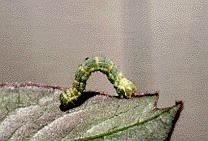
early instar
(Photo: courtesy of the
Macleay Collection, Chau Chak Wing Museum, University of Sydney)
The early instar of this caterpillar is green and smooth,
with a faint white lateral line each side,
and with pale yellow shading between the segments.
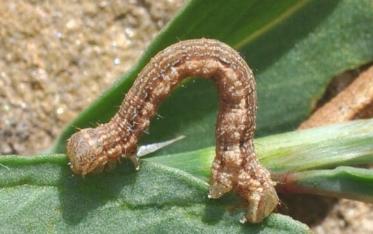
(Photo: courtesy of Steve Williams,
Moths of Victoria: Part 3)
The mature larva is brown
dorsally with a dark brown
herring-bone pattern. Underneath it is pale brown.
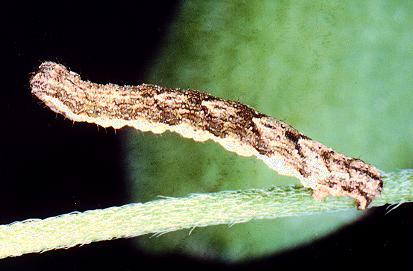
late instar
(Photo: courtesy of Merlin Crossley, Melbourne, Victoria)
The caterpillar has been found feeding on :
Scarlet Pimpernel ( Anagallis arvensis,
PRIMULACEAE ),
but has been reared successfully on:
Forget-me-not ( Myosotis arvensis,
BORAGINACEAE ), and
Burr Medic ( Medicago polymorpha,
FABACEAE ).
The caterpillar grows to a length of about 2 cms.
The life cycle is short, with the caterpillar stage only taking
about 25 days in summer in Melbourne.
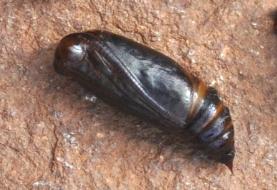
(Photo: courtesy of Steve Williams,
Moths of Victoria: Part 3)
The pupal stage lasts 12-18 days in summer in Melbourne.
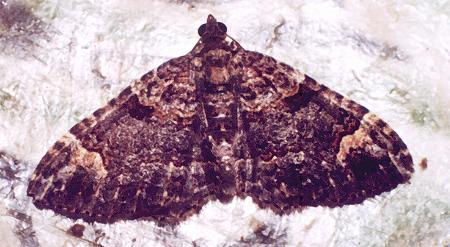
female
The adult has forewings that are brown,
traversed by variable wavy bands and lines.
Similar bands occur on the body.
The pattern on the hindwings
is less pronounced.
In its resting posture, the moth usually holds the wings flat,
with the hindwings covered by the forewings.
This moth sometimes rests with the wings folded up vertically like a butterfly.

The underside is like the top only the colouring
is less marked.
The moths have a wingspan of about 3 cms.
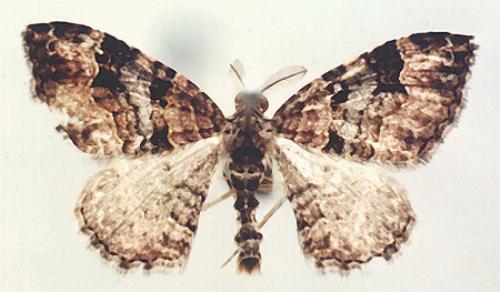
male
(Specimen: courtesy of the
Macleay Collection, Chau Chak Wing Museum, University of Sydney)
The eggs are ellipsoidal with a minute surface pattern.
Initially the eggs are pale green, and
grow brown and darker as hatching approaches.
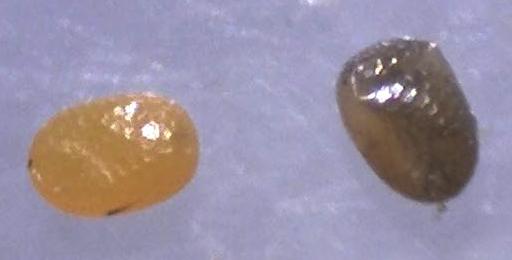
eggs, magnified
(Photo: courtesy of Steve Williams,
Moths of Victoria: Part 3)
The species have been found in
Queensland,
New South Wales,
Australian Capital Territory,
Victoria,
Tasmania,
South Australia, and
Western Australia.
The adult moths of this species are similar in pattern to those of
Epyaxa subidaria, however
the first line on the forewing meets the costa in a right angle,
whereas that of Epyaxa subidaria
meets it at an acute angle.
Further reading:
Peter Marriott,
Moths of Victoria: Part 3,
Waves & Carpets - GEOMETROIDEA (C),
Entomological Society of Victoria, 2011, pp. 26-27.
Francis Walker,
Geometrites,
List of the Specimens of Lepidopterous Insects in the Collection of the British Museum,
Part 25 (1862), p. 1410, No. 73.
(updated 9 September 2013, 2 June 2018, 19 October 2020)













